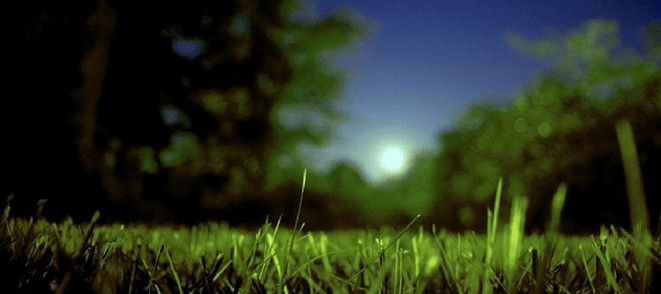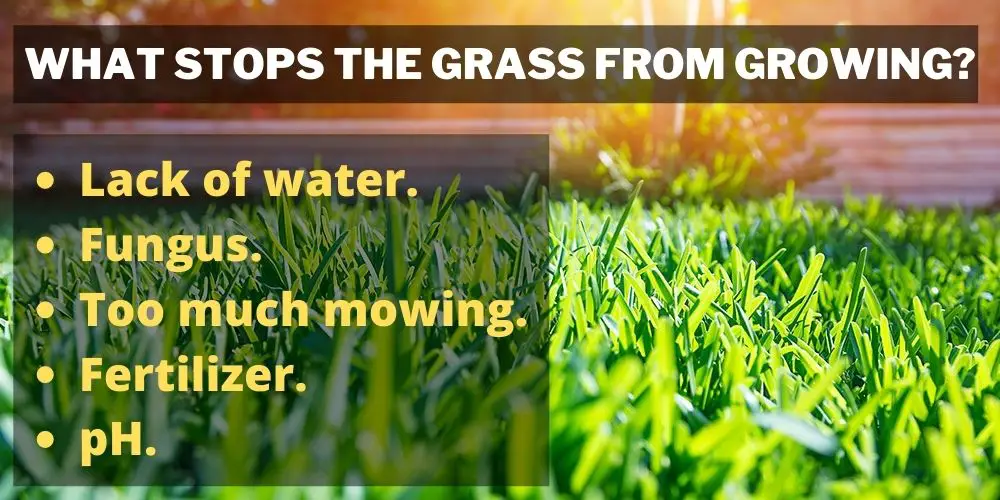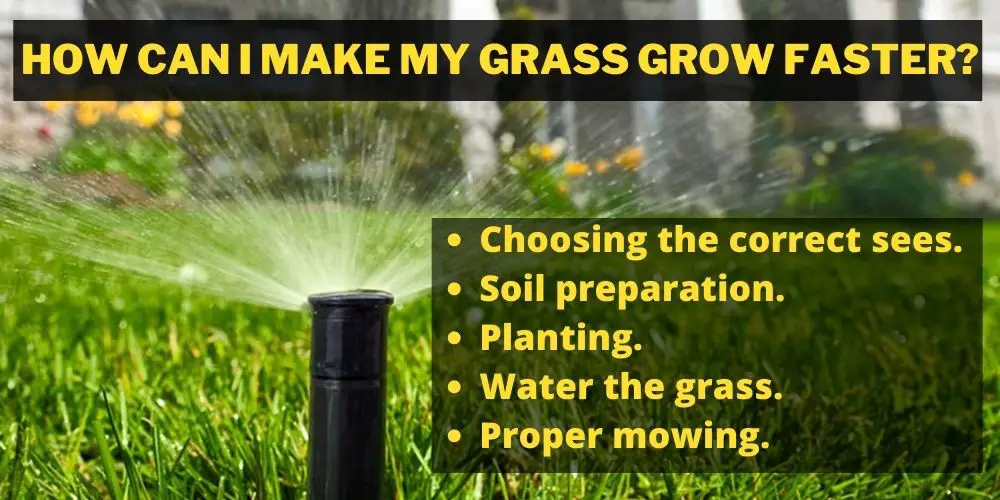Grass is a crucial part of any healthy, eye-pleasing lawn. To maintain a lush yard, understanding how grass grows is paramount. So, does grass grow at night?
This article will delve into the finer points of grass growth – with a specific focus on nighttime growth.

Table of Contents
Does grass grow at Night?
Yes, grass does grow at night. Growth in plants, including grass, is driven by an internal process that continues 24 hours a day.
During the night, grass uses the energy produced via photosynthesis in the daylight to manufacture and organize cells, thus growing. This process is known as cellular respiration and does not require sunlight, enabling grass to grow at night.
However, the rate of growth is influenced by various factors such as temperature, moisture, and the type of grass, with many species demonstrating more significant growth at night when conditions are often cooler and more humid.
The Science Behind Grass Growth at Night
Nighttime grass growth relies heavily on the natural processes of photosynthesis, cellular respiration, and circadian rhythms.
Photosynthesis: Photosynthesis changes sunlight into energy. Chlorophyll and other nutrients are critical to this process. Yet, during the night, photosynthesis slows down due to the lack of sunlight.
Cellular Respiration: Cellular respiration takes over at night. This process uses the stored energy and oxygen to break down food in cells. The energy produced in respiration drives growth and repairs any damage.
Role of Circadian Rhythms: There is a rhythm to nature. Grass manifests this through its circadian rhythm, aligning growth cycles to the day-night cycle. This rhythm controls growth and nutrient absorption rates.
Pros and Cons of Nighttime Grass Growth
Nighttime grass growth can significantly affect a lawn’s health – for both good and ill.
Pros: Nighttime growth brings about enhanced nutrient absorption and drought tolerance. Grass can grow faster due to increased cell division and energy production.
Cons: There are downsides, though. Photosynthesis is limited, and the risk of fungal diseases increases due to excess moisture. Moreover, nitrogen absorption becomes less efficient.
What Month does Grass Grow the Fastest?
This depends on the type of grass. For instance, cool-season grasses grow the fastest during cool months (spring and fall). However, if you have warm-season grass, these grow the best during hot months, i.e., summer.
Below is a list of the popular grass types per their season and how much time they take to grow.
| Grass Name | Season | Height |
| Bermuda grass | Warm | 7 to 10 days |
| Buffalo grass | Warm | Two weeks to 30 days |
| Centipede grass | Warm | 14 to 21 days |
| Perennial and annual ryegrass | Cool | 7 to 10 days |
| Kentucky bluegrass | Cool | 2 to 4 weeks |
| Tall fescue | Cool | 10 to 14 days |
What stops the grass from growing?
Though grass mainly grows naturally without much maintenance, they don’t grow as desired in some cases. Here are a few reasons which might prevent grass from growing:

Lack of water
The shortage of water might prevent grass growth and will turn it brown. If the lack of water continues for long, the grass will die. Besides, shallow watering can also create problems. The ideal weekly water level of grass should be 1 to 1.5 inches every week.
Fungus
If you water your grass during the night, fungus might develop, impeding grass growth. Besides, the fungus can take over the yard. Watering at night does help snails and other good worms; it also increases the growth of fungus. Thus all forms of watering must be between 5 am to 9 pm during summer.
Too much mowing
If you cut the grass too short or if you cut it with a dull blade, you can send the grass in shock. This can impact its growth and cause the grass to thin over time. Ideally, 70% of the blade should be left after each mowing session. Besides, it’s essential to use a sharp blade.
Fertilizer
Grass can also stop growing if proper fertilizer is not used or too much fertilizer is used. If grass lacks phosphorus or nitrogen, it can impede its growth. Additionally, nitrogen overload might also affect the grass.
Thankfully, there are different fertilizers available for different grass types. It’s advisable to contact a good landscaping company to get the correct fertilizer for your grass.
pH
Grass can also stop growing if the soil pH is not balanced. Ideally, the pH should be between 6.0 to 7.0 to help the grass grow. Grass grows best in slightly acidic soil, and such a pH level keeps the flow of nutrients steady.
How can I make my grass grow faster?
If you want to make your grass grow faster, there are a few steps that you can follow:

Choosing the correct seeds
Start by getting the right seed for your lawn. Your choice depends on the climate and soil type where you live. Warm climate seeds and cold climate seeds are not the same. The type of soil also affects seed choice. Snooping on what works for your neighbors’ lawns isn’t a bad idea.
Soil preparation
Next is soil preparation. A soil test kit helps assess nutrients and pH level in your soil. If the soil has too much acidity, add lime to make it right. If it’s too alkali, add sulfur. Compost or manure can fix poor nutrients. This is groundwork. It sets the stage for seed growth
Planting
Now you’re set to seed. The time of year matters. Check seed packets for the best time to plant. Seeds should spread evenly across the lawn. A spreader can make this task easier. Patience is key. Good things take time and so does a lush, green lawn.
Initial Watering
After sowing, keep the soil moist. This isn’t a one-time affair. You may need to water the lawn lightly several times a day. The goal is to quench the soil’s thirst, but not drown it. Puddles are a sign of over-watering.
Regular Fertilization and Management
Once the grass starts to grow, feed it. Fertilizers keep grass healthy. Use a spreader to apply your selected fertilizer. Handle issues like weeds and diseases as they come up. Weed control sprays or manual pulling can keep your lawn clean.
Season-Based Care
Different times of the year call for different lawn care. During hot weather, keep your grass hydrated. In the cold season, cut back on watering. Mowing the lawn is also important. Keep the grass at a constant height. Don’t trim more than a third of the blade each time. This keeps stress off the grass.
Regular Lawn Care
Finally, don’t ignore regular lawn maintenance. Monitor the health of your grass. Spot and fix problems as they appear. You might need to overseed to fill in bare spots. Or you may need to aerate for better air and water flow. Every lawn has unique needs. Learn to understand yours.
Frequently Asked Questions (fAQs)
01. Does grass grow on cloudy days?
Indeed. Grass will surely grow on a cloudy day only if the soil temperature is at least 50 degrees F and the soil is moist throughout. In fact, cloudy weather helps with germination as the soil will not dry out quickly.
02. Can grass grow in a week?
Grass can grow up to 2-6 inches in a week, given the ideal amount of humidity and temperature. The time of the year also plays a role in determining the growth rate of grass in a week.
03. Should I water my grass daily?
No. It’s not advisable to water your grass daily. Mostly, grass requires 1 inch to 1 ½ inch of water weekly. You should only water the grass till the top 6-8 layers get wet. You can either reach this goal in a single season or space it out over two half in watering season during the whole week.
04. Will grass spread?
Yes. Grass does spread. Mostly this happens through flowering, seed production, stolons, or rhizomes. However, more than one method is involved in spreading the grass.
You may also find this useful: How to Turn Yellow Grass Green | Will Frost Damage Freshly Cut Grass?
Conclusion
In summary, the question of nocturnal grass growth can be put to rest with a firm affirmation. Grass continues its growth cycle through the night, capitalizing on the energy reserves built during the day.
This nighttime growth is essential for a healthy lawn, although it hinges on a balance of proper maintenance and favorable environmental conditions.
Understanding this could greatly enhance lawn care practices, ensuring that homeowners can enjoy a lush, verdant landscape all season long. With the right care, your grass will not only survive but thrive – day and night.


